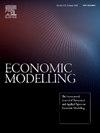最优投融资配合政府补贴时间建设
IF 4.7
2区 经济学
Q1 ECONOMICS
引用次数: 0
摘要
本文建立了一个包含企业与政府之间博弈论相互作用的实物期权模型。我们研究了政府补贴如何影响企业的最优投资和融资决策,当考虑到建设时间延迟。我们的研究结果表明,补贴促使杠杆企业加速投资,尽管投资规模较小,债务融资更为保守。此外,尽管获得的补贴较少,但杠杆企业往往比非杠杆企业更早、更大规模地进行投资。此外,随着补贴在缩短建设时间方面的效果增强,投资加速,杠杆率下降,最优投资规模呈现u型格局。最后,与非谈判债务相比,谈判债务融资对最优补贴和投资规模的影响取决于股东的议价能力。我们的模型为决策者设计有效的补贴计划和管理者制定合理的商业战略提供了新颖而实用的见解。本文章由计算机程序翻译,如有差异,请以英文原文为准。
Optimal investment and financing with government subsidies under time to build
This paper develops a real-options model that incorporates the game-theoretic interaction between firms and the government. We examine how government subsidies influence a firm’s optimal investment and financing decisions when accounting for time-to-build delays. Our findings indicate that subsidies induce leveraged firms to accelerate investment, albeit with a smaller investment scale and more conservative debt financing. Additionally, despite receiving fewer subsidies, leveraged firms tend to invest both earlier and at a larger scale than unleveraged firms. Furthermore, as subsidies become more effective at reducing time to build, investment is accelerated, leverage declines, and the optimal investment scale exhibits a U-shaped pattern. Lastly, compared to non-negotiated debt, the effect of negotiated-debt financing on optimal subsidies and investment scale depends on shareholders’ bargaining power. Our model offers novel and practical insights for policymakers designing effective subsidy programs and for managers formulating sound business strategies.
求助全文
通过发布文献求助,成功后即可免费获取论文全文。
去求助
来源期刊

Economic Modelling
ECONOMICS-
CiteScore
8.00
自引率
10.60%
发文量
295
期刊介绍:
Economic Modelling fills a major gap in the economics literature, providing a single source of both theoretical and applied papers on economic modelling. The journal prime objective is to provide an international review of the state-of-the-art in economic modelling. Economic Modelling publishes the complete versions of many large-scale models of industrially advanced economies which have been developed for policy analysis. Examples are the Bank of England Model and the US Federal Reserve Board Model which had hitherto been unpublished. As individual models are revised and updated, the journal publishes subsequent papers dealing with these revisions, so keeping its readers as up to date as possible.
 求助内容:
求助内容: 应助结果提醒方式:
应助结果提醒方式:


